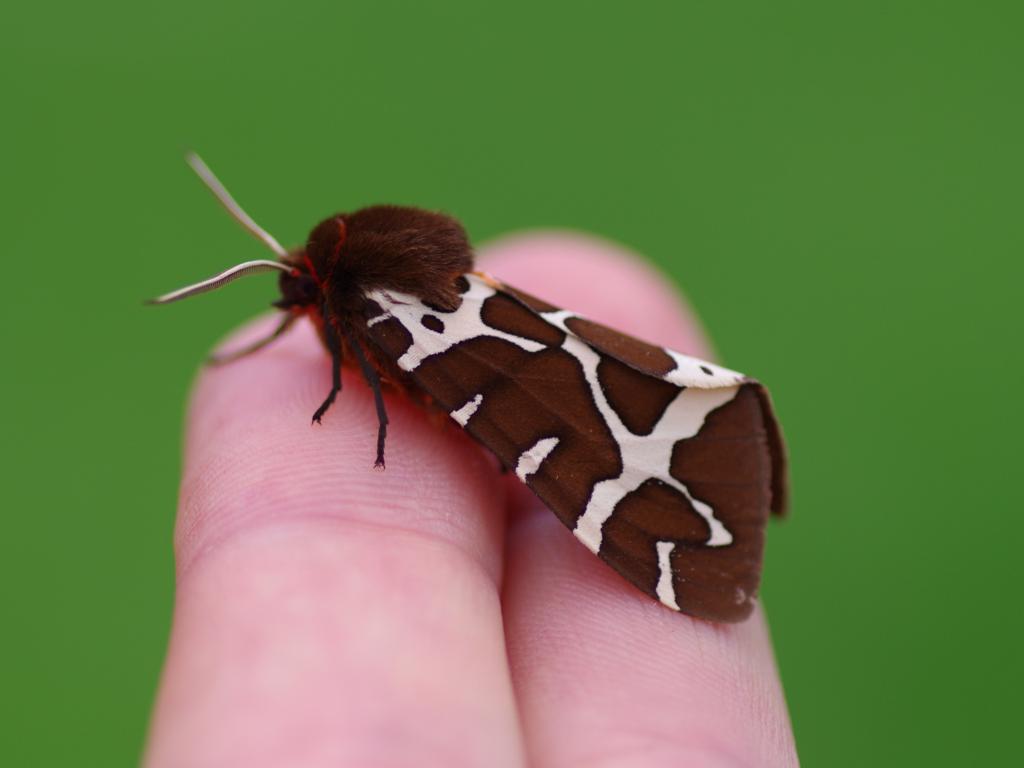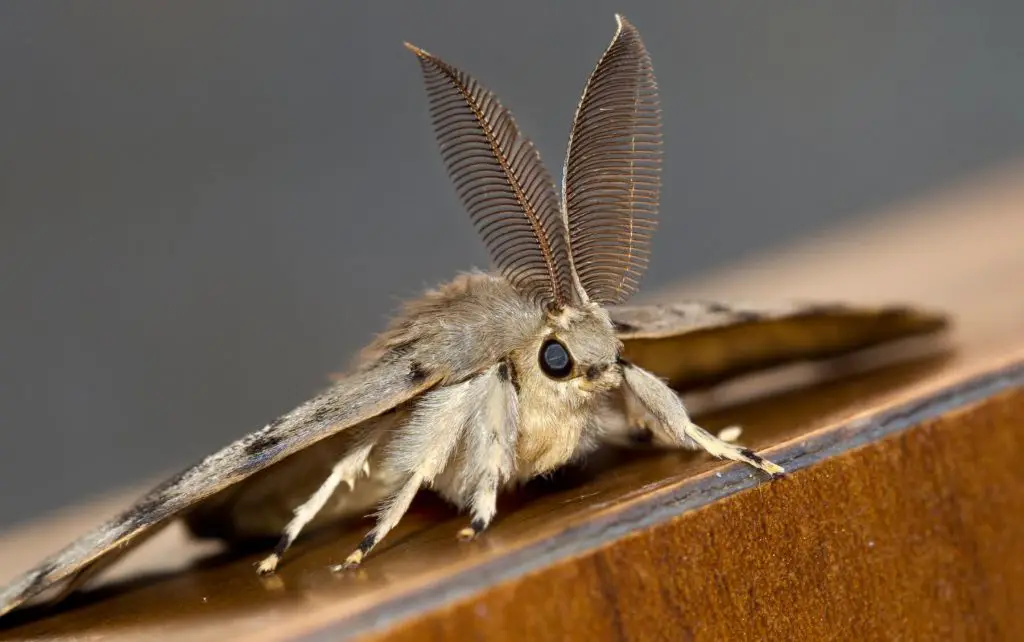Moths themselves are not inherently dirty. They are insects, and like many other insects, they can carry dirt, dust, and microorganisms on their bodies, especially if they have been in contact with contaminated surfaces. However, moths do not have a reputation for being particularly dirty or harmful to humans.
The concern with moths often arises from their larvae, commonly known as caterpillars, which can infest and damage clothing, fabrics, and stored food items.
Moreover, these caterpillars can leave behind silk webbing and fecal matter, which can be considered unsightly and unhygienic.
How do moths behave at night?
Moths are insects belonging to the order Lepidoptera, which also includes butterflies. They are characterized by several unique features:
- Moths typically have feathery or thread-like antennae, which help them detect pheromones released by potential mates and navigate their environment.
- Most moths have two pairs of wings covered in scales, which often give them a powdery appearance. These scales can vary in color and pattern, aiding in camouflage and species identification.
- Adult moths have a coiled tube-like mouthpart called a proboscis, used for feeding on nectar from flowers.
- Many moths are nocturnal, meaning they are active during the night. Their nocturnal habits help them avoid predators and take advantage of the darkness for mating and foraging.
Description of Moth Life Cycle:

The life cycle of a moth consists of several distinct stages:
- Egg: Moths lay eggs on suitable host plants, which provide food for the emerging caterpillars.
- Larva (Caterpillar): Once hatched, the larva or caterpillar emerges. Caterpillars are specialized for feeding and can vary greatly in appearance, depending on the species.
- Pupa (Chrysalis): After a period of feeding and growth, the caterpillar undergoes metamorphosis inside a protective casing called a pupa or chrysalis. This stage is often a period of significant transformation.
- Adult: The fully developed moth emerges from the pupa. Its primary goal as an adult is to mate and reproduce, completing the life cycle.
Moth Habits and Habitats
Moths exhibit diverse habits and habitats, adapting to various environments around the world:
Adult moths primarily feed on nectar from flowers, while caterpillars feed on leaves, fruits, or other plant parts, depending on the species.
Furthermore, moths use pheromones to communicate for mating. Females release chemical signals that attract males over long distances, facilitating reproduction.
In addition, moths can be found in a wide range of habitats, including forests, grasslands, deserts, and urban areas. Some species have specific habitat preferences, such as moths that inhabit wetlands or those adapted to alpine regions.
How do moths interact with humans and their environments?
Moths themselves are not dirty insects by nature. They do not carry diseases that can directly harm humans.
The perception of moths as dirty often arises from their association with damage to clothing and fabrics caused by their larvae (caterpillars) and the presence of silk webbing and fecal matter left behind.
It’s essential to differentiate between adult moths and their larvae when discussing hygiene concerns. Adult moths primarily feed on nectar and are not responsible for causing damage to household items.
Moth Interactions with Humans and Their Environments:
Moths can have various interactions with human environments:
- Pest Infestations: Certain moth species, like clothes moths and pantry moths, can infest homes and cause damage to clothing, carpets, upholstery, and stored food items.
- Attraction to Light: Moths are often attracted to artificial lights at night, leading them to gather around buildings and light sources.
- Pollination: Many moth species play a crucial role in pollinating plants, especially those with night-blooming flowers. They contribute to ecosystem health by aiding in plant reproduction.
- Research and Study: Moths are subjects of scientific research, particularly in the fields of entomology and ecology, contributing to our understanding of biodiversity and ecological interactions.
Moths’ Role in Ecosystems:
Moths have significant ecological importance within various ecosystems:
- Pollination: Some moths, such as hawkmoths and sphinx moths, are effective pollinators of a wide range of plants, including economically valuable crops like tomatoes and tobacco.
- Food Source: Moth caterpillars serve as a vital food source for many predators, including birds, bats, and other insects. They contribute to the food web and help control insect populations.
- Decomposition: Moth larvae that feed on dead plant material, detritus, and animal remains assist in breaking down organic matter, contributing to nutrient cycling.
- Indicator Species: Moths can be indicators of environmental health. Changes in moth populations can signal shifts in ecosystem dynamics, climate change impacts, or habitat quality.
How do moth larvae damage fabrics and food?
Moth larvae, commonly referred to as caterpillars, are the immature stage of moths.
Caterpillars vary in appearance, size, and behavior depending on the moth species but typically have a cylindrical body with segments, three pairs of true legs, and several pairs of fleshy, proleg-like structures.
Caterpillars have chewing mouthparts and are voracious feeders, consuming plant material, which can include leaves, fruits, grains, and even fabrics in some cases.
Furthermore, the duration of the caterpillar stage can vary widely, from a few weeks to several months, depending on environmental conditions and the specific moth species.
How Moth Larvae Can Affect Hygiene
Moth larvae can affect hygiene in various ways, primarily through their feeding habits and byproducts:
- Fabric Damage: Clothes moths (such as Tineola bisselliella and Tinea pellionella) are notorious for infesting natural fibers like wool, silk, and fur. Their caterpillars feed on these materials, creating holes, and leaving behind silk webbing.
- Food Contamination: Pantry moths, such as the Indian meal moth (Plodia interpunctella), infest stored food items like grains, cereals, and dried fruits. Their caterpillars contaminate these products with feces, webbing, and silk threads, rendering them inedible.
- Allergic Reactions: In some cases, exposure to allergenic proteins found in moth larvae and their shed skins can lead to allergic reactions in sensitive individuals.
- Hygiene Concerns: The presence of moth larvae and their damage to clothing, fabrics, and food items can raise significant hygiene concerns, particularly in homes and businesses.
Examples of Damage Caused by Moth Larvae:

Moth larvae are responsible for various forms of damage, and the extent can vary depending on the infestation and moth species:
- Fabric Damage: Caterpillars of clothes moths create irregular holes in clothing, blankets, and upholstery, weakening the fabric’s integrity. They also leave behind silken tunnels and mats.
- Food Contamination: Pantry moth larvae contaminate food products with silk webbing and feces. Infested grains or dried goods may develop an off-putting odor and taste, making them unsuitable for consumption.
- Crop Damage: Some moth caterpillars are agricultural pests, causing damage to crops such as corn, cotton, and fruit trees. Their feeding can lead to economic losses for farmers.
- Damage to Natural Habitats: Caterpillars of certain moth species can defoliate trees and shrubs in natural ecosystems, affecting habitat quality for wildlife.
FAQ’s
Can you get sick from moths?
No, moths themselves do not transmit diseases to humans. However, their larvae, if present in contaminated food, can pose health risks.
Is a moth in your room bad?
Having a moth in your room is not inherently bad. Moths are harmless insects, and their presence is a natural part of the environment.
Can you touch a moth?
Yes, you can touch a moth. However, moths are delicate, and handling them roughly can damage their wings and scales.
What is the dust on moths?
The dust on moths is made up of tiny, overlapping scales. These scales help moths with camouflage, insulation, and in some cases, thermoregulation.
Can moths go in your ear?
While rare, moths can accidentally fly into ears. If this happens, it’s important to seek medical attention for safe removal.
What if a moth visits you?
If a moth visits you, it’s a natural occurrence. You can gently guide it back outside if you prefer it not to stay indoors. Moths are not omens or symbols; they are simply insects.
Conclusion:
In summary, moths are not inherently dirty insects, but they can indirectly impact hygiene in specific situations. Moth larvae, also known as caterpillars, are the culprits when it comes to hygiene concerns.
In addition, they munch on clothing, fabrics, and stored food, leaving behind holes, silk webbing, and unpleasant surprises. However, it’s crucial to remember that adult moths, with their fuzzy antennae and fluttering wings, don’t pose hygiene problems.
Moreover, moths play essential roles in ecosystems. They pollinate flowers, serve as tasty meals for various animals, and even help break down organic matter. So, while moths can be pesky in some situations, they’re valuable members of the natural world. To keep the moths at bay and maintain good hygiene, take precautions like proper storage and cleanliness.
So, in the grand scheme of things, moths are just doing their moth-y things, and understanding their habits can help us coexist more peacefully with these fascinating insects.

